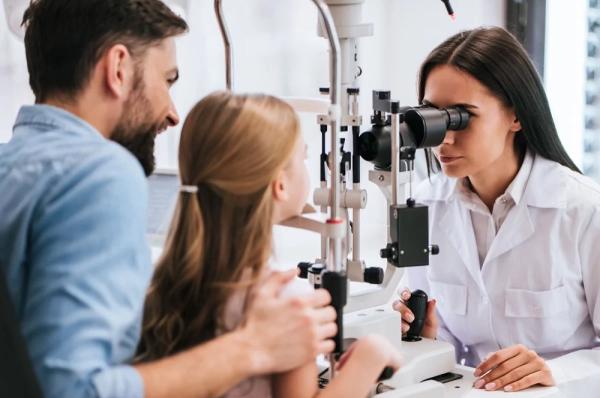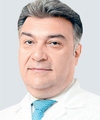
The task of detecting that a child has a vision problem tends to fall on parents: “He’s tired”, “He’s being silly”, “He’s doing it to get attention”, and so they ignore the alarm signals. Many times, not even the child him- or herself is aware that their vision is getting worse, since he/she quickly gets used to seeing the world blurred or with faded colors and does not complain about it.

Pediatric ophthalmologist, eye surgeon, doctor of medical sciences, professor and founding director of the Association of Pediatric Ophthalmological Clinics, Igor Aznaurián, explained to aif.ru what the alarm signals are that should get you to jump to your feet:
Don’t wait too long with eye pathologies. The final result depends to a great extent on how early the eye problem is detected. In 98% of cases, seeing a specialist in time makes it possible to recover or considerably improve vision, even in the case of serious visual pathologies.
It is also very important to understand that when the first symptoms appear, the child should not be taken to the nearest ophthalmologist in the clinic or to an optician to have their visual acuity checked, but to a pediatric ophthalmologist. The reason for this is that children’s eyes differ significantly from adults’: they continue to grow until the age of 18 and their structures also change constantly.
Why is it important not to waste a single minute?
A child’s vision develops gradually. During the first year of life, babies learn to focus their gaze and follow objects. Shortly thereafter, they recognize faces, colors and shapes. By preschool age, sight becomes the main tool for getting to know the world: the child actively draws, plays and learns to read and write. When they start school, the load on their eyes increases sharply: classes, homework, devices and screens become an inseparable part of their lives.
If their vision gets worse during any of these periods, the child cannot always explain that they cannot see well or that they feel discomfort.
It is important to remember: eye diseases in children do not only affect visual acuity. If it gets worse, it can lead to the following disorders:
- Speech and fine motor skills developmental delays. Children learn to speak and coordinate their movements by observing the world that surrounds them. If the image is blurred, this process is slowed down.
- Fall in academic performance. The child finds it difficult to read, write or understand the text on the blackboard. Often, the school child is ashamed to comment on it to the teacher. As a result, the child begins to lag behind their classmates, which leads to stress and loss of interest in studying.
- Self-esteem problems. Strabismus or eyeglasses may cause classmates to make fun of the child. In addition, poor vision in most cases prevents the child from playing sports and engaging in preferred hobbies.
- Eye strain and headaches. In the case of a pathology, the eye works to the maximum, trying to “capture” even the smallest details, which causes fatigue and painful sensations.
The sooner the doctor detects the problem, the easier it will be to solve it. Children’s eyes are incredibly “plastic” and responsive to treatment. At a young age, many alterations can be corrected without consequences for the future; you just have to start the correction in time. In most cases, it is important to start treatment for visual pathologies before the age of seven.
Symptoms that should set off alarm bells
Babies up to 3 years old
At this age, children still do not speak or speak very little and do not understand if something hurts. Therefore, it is important to pay attention when:
- The baby does not focus their gaze on a toy or on their mother’s face.
- Their eyes seem “uncoordinated”: one eye looks directly ahead and the other moves to one side.
- The baby blinks or rubs their eyes frequently.
- They are afraid of bright light or, on the contrary, do not react to it.
- They hold toys very close to their eyes.
Children from 3 to 6 years old
This is a stage of active play, drawing and first encounters with letters. It is precisely during this period that visual difficulties become noticeable. It is necessary to pay close attention when:
- The child squints when looking at the screen or something distant.
- They blink or close one eye frequently.
- They say that their “eyes hurt” or that “everything looks blurry.”
- They bump into corners of furniture or cannot reach the object they want.
- They sit very close to the television or rest their head on the table when they draw.
In this situation, many mothers think: “But they’re just tired!” However, tiredness is not constant. If it is not a one-off manifestation, it is essential to see a doctor.
School children from 7 to 14 years old
In school, the eyes begin to work to the maximum: blackboard, textbooks, devices. If their vision gets worse, the child may begin to:
- Sit closer to the television or choose the first seat in class.
- Complain of headaches and fatigue after class.
- Confuse letters or skip lines when reading.
- Squint and rub their eyes.
At this age, myopia often appears, which is particularly dangerous because it develops imperceptibly, but it progresses rapidly.
Which eye diseases occur most frequently in children?
Vision problems in children are becoming increasingly common. According to the World Health Organization, around 19 million children suffer from vision disorders:
Strabismus. Strabismus is not only an aesthetic defect, but also a serious problem that may lead to loss of visual acuity and distortion of perception of the outside world. Due to the incorrect position of the child’s eyeballs, binocular vision is altered and the brain starts to ignore the image from the deviated eye. This can lead to the child not seeing the world in three dimensions, but as a flat image.
When should you see a doctor?
Given that even serious eye diseases may not manifest themselves for a long time, the best prophylaxis is regular preventive checkups once a year. At birth, the ophthalmologist always examines the baby. The next examination should take place at three months, then at six months and at one year. This is mandatory! None of these visits with the pediatric ophthalmologist should be skipped before the age of one.
Prevention
Limit children’s use of devices: for the



